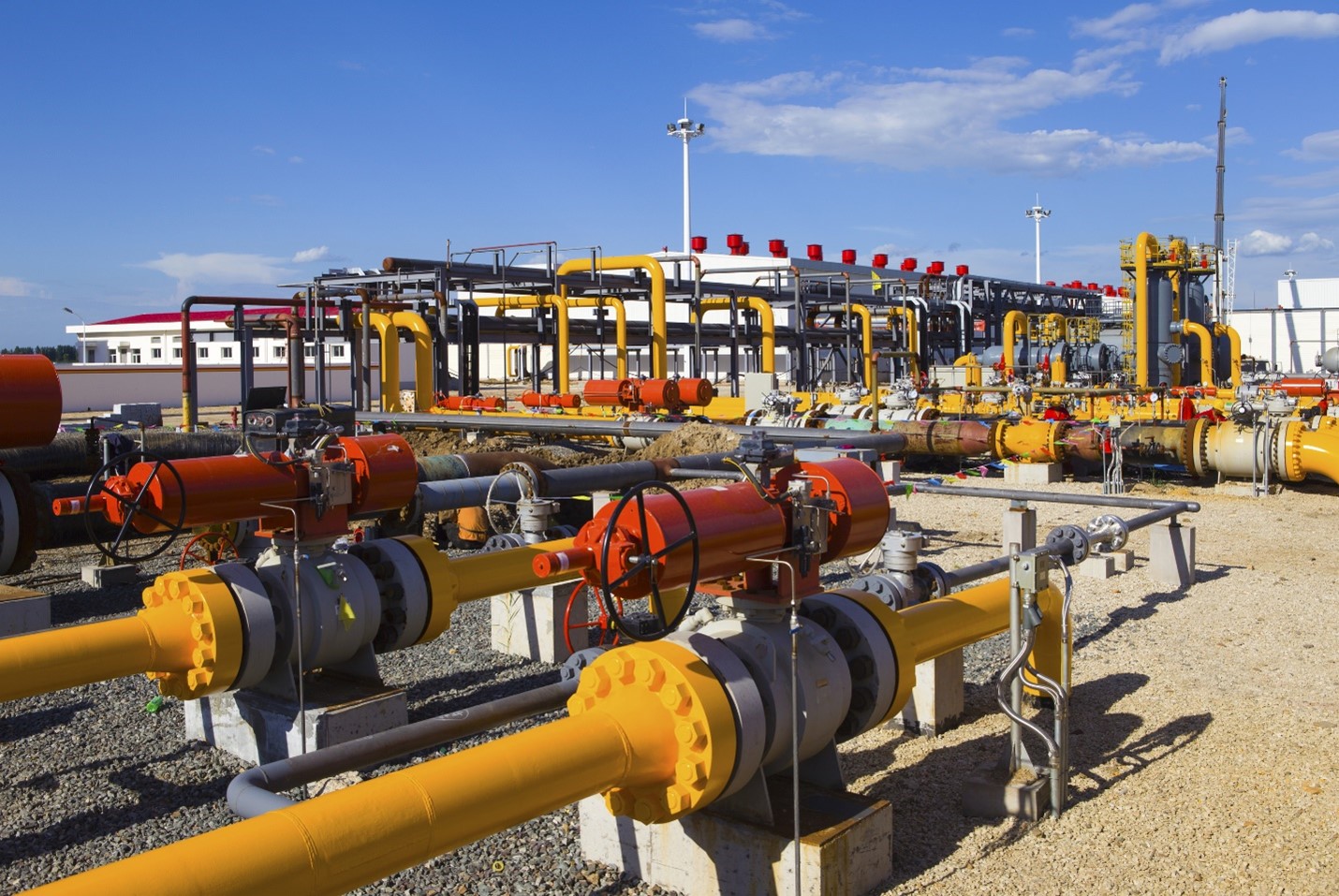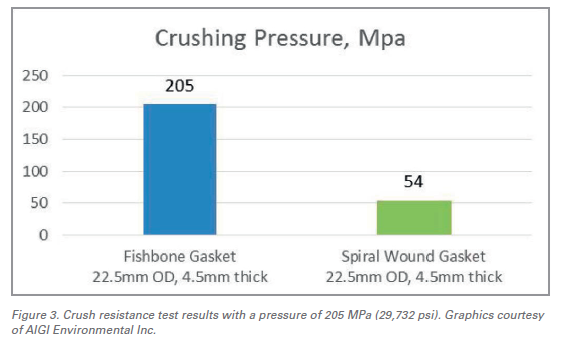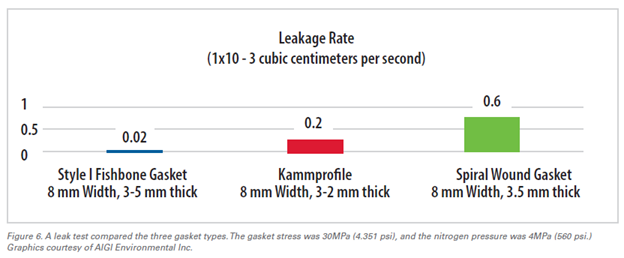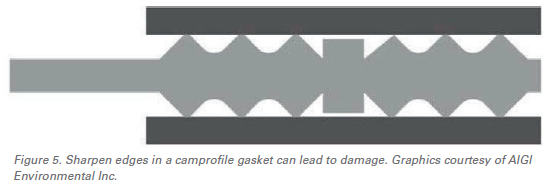Gaskets are crushed more frequently than many end users realize. Some maintenance professionals claim that is all they see when they separate a leaking flange. Many simply replace the gasket rather than investigating the cause of the failure in depth.
By Justin Zhao, AIGI Environmental Incorporated
Gasket crush is a significant threat to plant reliability. This problem causes leaks, which can lead to a dangerous plant situation, especially if a hazardous fluid is involved. This issue is unpredictable and introduces variability into plant operations.
All types of gaskets (metal, non-metal, and composite) experience gasket crush. If a gasket design fails on the first installation, plant personnel can replace it with a new design during the next plant shutdown. However, if a gasket has worked nine times without a problem, then leaks on the tenth installation because of gasket crush, an unplanned maintenance response is required.
Users have two options for reducing gasket crush: better torquing procedures, which can be difficult, and better gasket design, which is easier to implement.

Torquing Procedurest
In a crushed gasket, different compression patterns are visible – sometimes on one side of the gasket, sometimes on opposite sides and sometimes all over the gasket.
These patterns point to over-compression. The most obvious conclusion, that something was wrong with the torque, is based on a few important assumptions. It must be noted that sophisticated torque equipment, such as torque wrenches or bolt tensioners, is often used during installation accuracy, which is generally between 5 and 15 percent at best. The aforementioned assumptions include:
Bolts must be well-lubricated with a lubricant of known coefficient of friction, because unlubricated bolts can consume up to 50 percent of the torque load. Torque typically is calculated based on the bolt material, not the required load of the gasket material, which is usually too high for the gasket need. Personnel only have access to a recommended bolt load for the cool flange when the operation has not yet started. The crucial hot torque load value is rarely available.
Successful flange hot torquing is a disappearing art because of reductions in senior maintenance professionals who have had many years of experience performing the task.
Maintenance workers torque flanges before plant start-up, but when operational, flanges expand because of process heat. Personnel must also perform a hot torque process to prevent leaks. Torquing practice in the field is based on skills and judgment.
Maintenance team members sometimes hot-torque a flange without a proper torque value for that temperature, and leakage persists. In this situation, maintenance personnel often continue to tighten the bolts until the leak stops. The gaskets are usually crushed at this point.
Successful flange hot torquing is a disappearing art because of fewer senior maintenance staff who have had many years of experience performing the task.


Gasket Design
Designing better gaskets is a much easier solution in practice than attempting to deal with torquing procedures and the art of hot torquing.
Spiral-wound and camprofile gaskets are the most commonly used metal gasket types. The compressibility and elasticity of spiral-wound gaskets are useful sealing characteristics. When paired with the strength that a camprofile gasket achieves through its unitary metallic structure, gaskets start to approach optimal design.
These gasket types also have negative features – such as sealing issues – that should be addressed to improve gasket design.
Both types also provide variable performance. Spiral-wound gaskets have a tendency to unwind, and camprofile gaskets do not recover well. An improved design would also eliminate the flange-damaging characteristics of both types by removing any sharp edges or points. The optimal gasket would be a solid, unitary metallic structure to prevent crushing. It would incorporate a mechanism for compressibility and elasticity for improved sealing (see Figure 1).
To achieve a crush-proof gasket, a simple feature called a stop-step can prevent over-compression of the flexible rib elements and eliminate the possibility of destructive compression of the overlaid sealing element. These stop-steps can be located outside the sealing area but between the flexible ribs for additional support (see Figure 2). An internal rounded stop-step, which is integral to the design, provides a positive stop that prevents over-stressing of the ribs and the graphite sealing element.




The stop-step ensures that the ribs remain elastic and functioning in their self-energising capacity because it prevents them from being stressed beyond their elastic limit. The same is true for the graphite-sealing element. The ribs, stop-step and graphite-sealing element perform as an integrated system to ensure maximum sealing performance under bolt load.
A gasket with this design is more difficult to make than constructing the concept. Designers cannot assume that any design element on its own will work. They must find a balance between the step height, rib angle or curvature, and thickness to achieve optimal sealing while eliminating gasket crushing and sealing element over-compression.
The gasket prototype designs shown in Figures 1 and 2 were tested for crush resistance and sealing. The results confirm the effectiveness of the overall design and the specific utility of the stop-step (see Figures 3 and 6).
The stop-step, which prevents gasket over-compression, can be applied to other types of gaskets. Both spiral wound and camprofile gaskets can incorporate this design feature (see Figures 4 and 5).
Gasket innovation is often a difficult and slow process because of the limited number of gasket features that can economically be incorporated in a design that must fit the space constraints between two flanges.
These improvements are important as gaskets move toward the ultimate sealing reliability. The stop-step design is one small step on the path to a new standard for metal gasket reliability.


